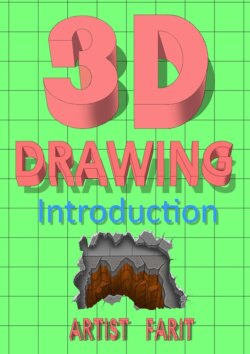Читать книгу 3D drawing. Introduction - Artist Farit - Страница 5
Errors in 3D drawing
Parsing errors
ОглавлениеNot does error, he who does nothing.
Proverb.
The first example.
This is my drawing from a photograph of a 3D drawing of a watch. I didn’t distort the watch like that; it looks exactly like that in the photograph. It may very well be that there are similar oblate, vertically compressed watches, with a dial in the form of an ellipse. Watches with different sizes of numbers. Personally, I have not seen such a watch. Perhaps such a distortion of the clock was conceived in the plot of the picture. Perhaps this is just such an artistic device. Perhaps I do not know and did not understand the plan, or the plot.
I “saw” the error in building the perspective in this figure, and decided to make out why the clock could have turned out to be of such an “irregular” shape. For me, this is one of the good examples where you can parse the perspective errors of a 3D drawing.
This watch is beautifully painted in terms of painting. Colors, shadows, highlights, reflections, all is well! BUT! With very large violations of perspective (geometry).
The picture is probably made from a photograph. Perhaps the photo was not stretched vertically, or not squeezed horizontally to make the dial look like a circle.
In the left picture is the original.
In the right picture.
It was this pattern of watches that I stretched vertically and squeezed horizontally. Made the dial look more like a circle. Even in this case, the correct, normal perspective (geometry) of the picture does not work out. The watch seems to be standing on one left (for us) leg and tilted (falling) towards the viewer.
Why, in my humble opinion, such a mistake was made.
If the subject is photographed from the top point, then in the figure it will look as if we are looking at it from above. But! We look at the drawing on the asphalt not vertically from above, but almost horizontally from the side. The photograph of the clock by which this picture was drawn was not taken at the same angle from which viewers look at the clock pattern.
This figure shows why such a distortion of the perspective of the picture occurs.
In the picture to the left.
The angle and distance from the clock to the camera while taking a preliminary photo. In the photograph on which the drawing was drawn, the clock is photographed almost vertically from above, from a short distance. About the small distance between the clock and the camera, says a big difference in the sizes of the numbers 12 and 6. In the picture to the right.
The angle and distance from the picture to the camera while shooting the picture. In the drawing, viewers look and take pictures, almost from a horizontal direction, but see the clock as if they were looking at the clock from above. Therefore, there are similar distortions of the perspective (geometry) of the 3D drawing.
In the left picture.
Original watch stretched to a round dial.
In the right picture.
Something like this might look like a clock, if first, correctly build the perspective of the clock. Another thing is that it would be problematic to draw such a height, such a size clock. Because the drawing would turn out almost to the horizon. Perhaps this is why the picture was squeezed vertically?
Criticism is only fruitful then
when she, in condemnation, indicates that
what should be that which is bad.
Lev Tolstoy.
Following the advice of Leo Tolstoy, I criticize fruitfully, I point out what should be that which is bad.
How to avoid a similar mistake in drawing perspectives.
The first way.
Pre-build the projection of the clock. On this correct projection, apply details, colors, shadows, highlights, reflections from those watches whose photographs were liked by the customer or the artist himself.
The second way to avoid this error.
Take a picture of the watch yourself at the right angle and from the right distance.
How to draw such a clock correctly will be very simply and clearly shown in one of the books in this course. Or in one of the lessons on my Patreon page.
https://www.patreon.com/ArtistFarit
A chapter in a course or exercise on Patreon will be called “Cylinder Lying Horizontally.”
